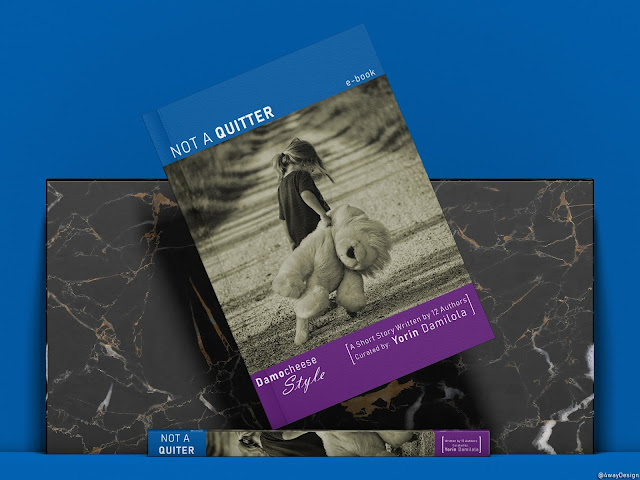How to make $500 a month as a Freelancer in 2022
Latest update
Copywriters are some of the highest-paid writers in the world, but to become
a truly proficient and profitable copy expert, you’ll need to invest time and
energy in studying the craft. The great news is that you earn more than salary workers and more importantly earn in dollars.
What is Copy writing?
Copywriting is the process of writing persuasive marketing and promotional materials that motivate people to take some form of action, such as make a purchase, click on a link, donate to a cause, or schedule a consultation.
What is Freelance writing?
Freelance writing is the practice of writing for money while working on one's own and not being employed by a company or organization. Freelance writers produce whatever written text is needed by their clients, either working from home or in a rented office space.
Things you should do first:
1. Get a PayPal account
A comprehensive guide to get a legit PayPal account : Click here
2. Know how to write a proposal.
3. Get Recommend Apps/Platforms
4. Professional guide to Copywriting: Click here
How to Write Headlines That Work
In The Copywriter’s Handbook, copywriter Bob Bly sets forth eight time-tested headline categories that compel action and rake in sales:
• Direct Headlines go straight to the heart of the matter, without any attempt at cleverness. Bly gives the example of Pure Silk Blouses – 30 Percent Off as a headline that states the selling proposition directly. A direct blog post title might read Free SEO E-book.
• An Indirect Headline takes a more subtle approach. It uses curiosity to raise a question in the reader’s mind, which the body copy answers. Often a double meaning is utilized, which is useful online. An article might have the headline Fresh Bait Works Best and yet have nothing. to do with fishing, because it’s actually about writing timely content that acts as link bait.
• A News Headline is pretty self-explanatory, as long as the news itself is actually, well … news. A product announcement, an improved version, or even a content scoop can be the basis of a compelling news headline. Think Introducing Flickr 2.0 or My Exclusive Interview With Steve Jobs.
• The How-to Headline is everywhere, online and off, for one reason only – it works like a charm. Bly says, “Many advertising writers claim if you begin with the words how to, you can’t write a bad headline.” An example would be, umm… oh yes… the title of this section of the book.
• A Question Headline must do more than simply ask a question, it must be a question that, according to Bly, the reader can empathize with or would like to see answered. He gives this example from. Psychology Today: Do You Close the Bathroom Door Even When You’re the Only One Home? Another example used in Internet marketing guru-ville is Who Else Wants to Get Rich Online?
• The Command Headline boldly tells the prospect what he needs to do, such as Exxon’s old Put a Tiger in Your Tank campaign. Bly indicates that the first word should be a strong verb demanding action, such as Subscribe to Copyblogger Today!
• Another effective technique is called the Reason Why Headline. Your body text consists of a numbered list of product features or tips, which you then incorporate into the headline, such as Two Hundred Reasons Why Open Source Software Beats Microsoft. It’s not even necessary to include the words “reasons why.” This technique is actually the underlying strategy behind the ubiquitous blogger “list” posts, such as 8 Ways to Build Blog Traffic.
• Finally, we have the Testimonial Headline, which is highly effective because it presents outside proof that you offer great value. This entails taking what someone else has said about you, your product or service, and using their actual words in your headline. Quotation marks let the
reader know that they are reading a testimonial, which will continue in the body copy. An example might be “I Read Copyblogger First Thing
Each Morning,” admits Angelina Jolie.
THE STRUCTURE OF PERSUASIVE COPY.
• First of all, focus on the reader – make an important promise early on (with your headline and opening paragraphs) that tells the reader what’s in it for her. Never allow readers to question why they are bothering to pay attention.
• Each separate part of your narrative should have a main idea (something compelling) and a main purpose (to rile up the reader, to counter an opposing view, etc) which supports your bigger point and promise. Don’t digress, and don’t ramble. Stay laser focused.
• Be ultra-specific in your assertions, and always make sure to give
“reasons why.” General statements which are unsupported by specific facts cause a reader’s BS detector to go on high alert.
• Demonstrate large amounts of credibility, using statistics, expert references, and testimonials as appropriate. You must be authoritative
– if you’re not an existing expert on a subject, you’d better have done your research.
• After building your credibility and authority, make sure you get back to the most important person — the reader. What’s STILL in it for him? Restate the hook and the promise that got readers engaged in the first place.
• Make an offer. Whether you’re selling a product or selling an idea, you’ve got to explicitly present it for acceptance by the reader. Be bold and firm when you present your offer, and relieve the reader’s risk of acceptance by standing behind what you say.
• Sum everything up, returning full circle to your original promise and demonstrate how you’ve fulfilled it.
• These are some of the key elements of persuasive copy. Use them to provide a “roadmap” to your writing, and you’ll achieve better results.



Comments